Beyond the Brief: How DDB and Our Watch Created a Game to Teach Young People About Boundaries
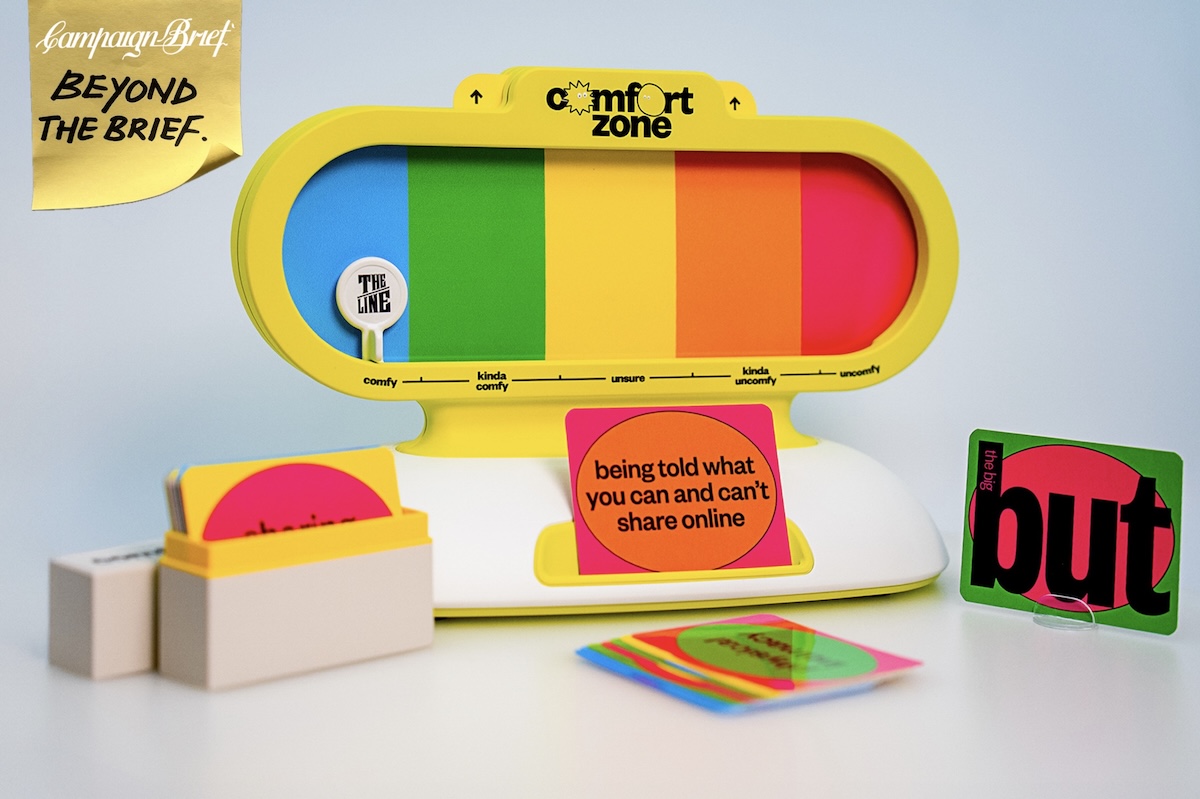
How do you teach young people about boundaries, respect, and consent without making it feel like a lecture? That was the challenge DDB Group Melbourne took on with Comfort Zone, a new board game launched last month, created with Our Watch, Australia’s leader in primary prevention of violence against women. In this edition of Beyond the Brief, ECD Giles Watson and Senior Planner Connie Watters share the creative thinking and real-world insight behind the campaign.
What was the original brief from Our Watch?
Giles Watson: As young people begin to explore relationships, many are learning for the first time how to express feelings, set boundaries, and navigate challenges like jealousy, peer pressure and fear of judgment. Our Watch asked us to create a way for young people to better understand what healthy boundaries look like, how to talk about them with confidence, and how to recognise the difference between supportive behaviour and controlling actions. We also had to account for a wide range of maturity levels and lived experiences to ensure the approach felt both empowering and relatable.
What inspired the idea of creating a board game as opposed to a traditional campaign?
GW: We needed to create something that could live in real conversations. A board game has this great ability to remove cultural pressures and create genuine interaction and discussion, so by creating our own, we could go beyond what a traditional campaign could achieve and create something that spearheads peer-led modelling of behaviour. The game can then become a real guide that gives young people the tools through language to navigate their feelings and hold their boundaries.
Even playful elements like “The Big BUT card” serve a bigger purpose: they give young people real-world templates for speaking up and setting limits.
What insights or observations about how young people communicate unlocked the idea for Comfort Zone, and how did those shape the direction of the game?
Connie Watters: Our Watch research showed that young people are fluent in nuance. They don’t speak in absolutes, and rather talk through vibes and emotional cues. So we leaned into that. The idea of mapping your personal “comfort zone” and seeing how it overlaps or differs from someone else’s has become a powerful metaphor. It gave permission to say, “I’m okay with this, but not with that” in a way that feels natural and judgement-free.
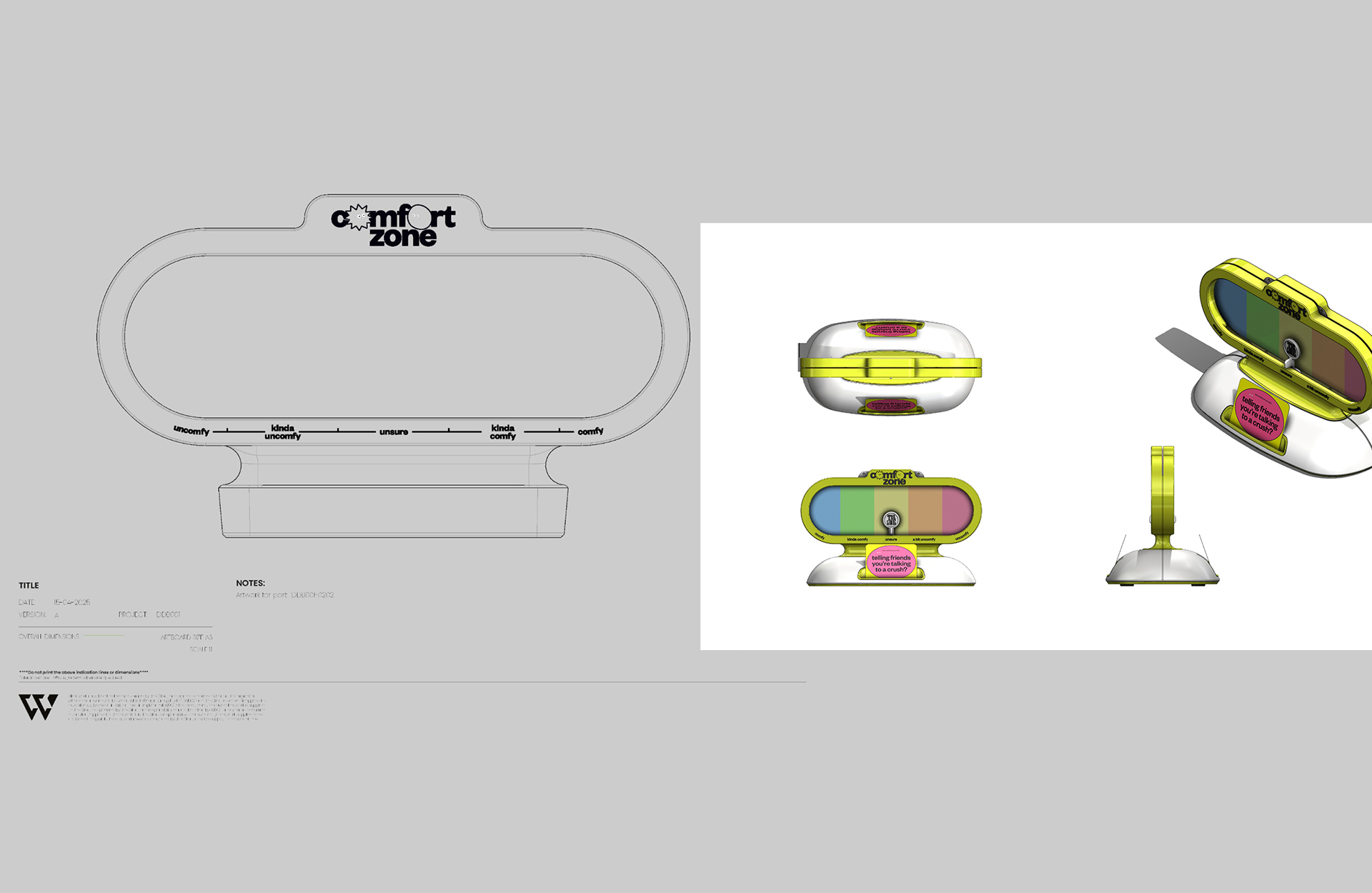
How did the team go about making the sensitive topics of consent, respect and emotional boundaries approachable and engaging for young audiences?
GW: With Our Watch we brought young people into the process from the very beginning, alongside behavioural experts, to ensure the tone was honest but never “heavy”. Importantly, the game puts players in control: they can speak, skip or just listen. That kind of autonomy is critical when dealing with sensitive themes.
Given the varying levels of maturity and relationship experience within the audience, we designed an experience that builds gradually, introducing scenarios and questions that grow more complex over time. This approach mirrors the way young people learn and reflect, taking them on a journey of discovery rather than delivering static advice.
Recognising the strong influence of online voices in young people’s lives, we also brought in influencers to guide the conversation as role models. Their familiar tone and social credibility help make the content feel accessible and authentic, establishing how to play and creating space for honest, relatable dialogue.
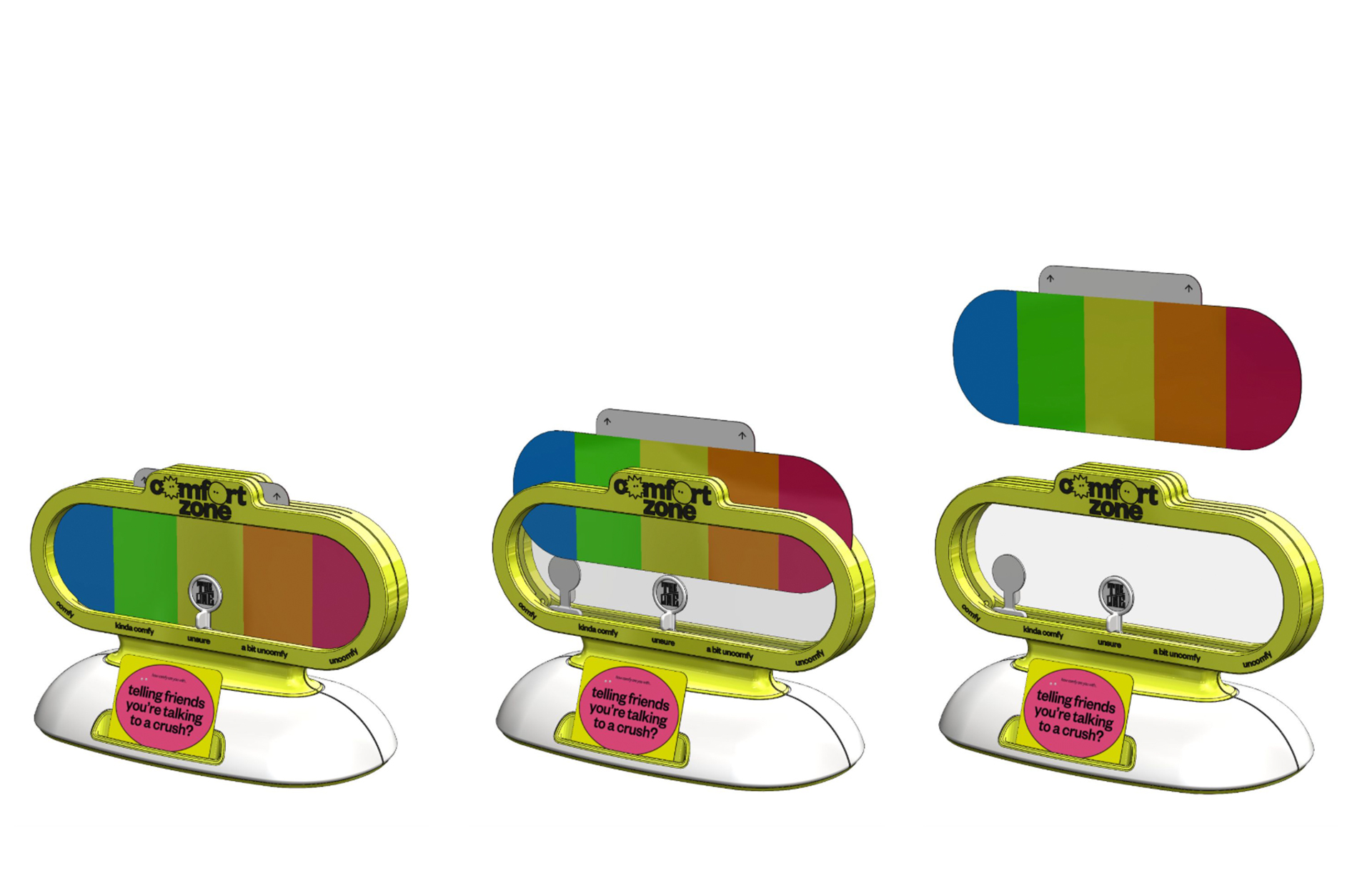
The game covers a broad spectrum of topics – from physical boundaries to digital behaviours. How did you decide which subjects to include?
CW: We worked closely with Our Watch and their research partner Quantum Market Research and found that not all young people are on equal footing with their knowledge and consideration of romantic relationships. It became important for us to build the campaign narrative and topics of discussion in line with the context of young people, as well as their maturity and experience level, to achieve engagement, resonance, and therefore impact on behaviour.
Our Watch’s sector expert group ensured the content was grounded in evidence, while their youth advisory panel provided input to ensure the topics were relatable and connected to young people’s real lives.
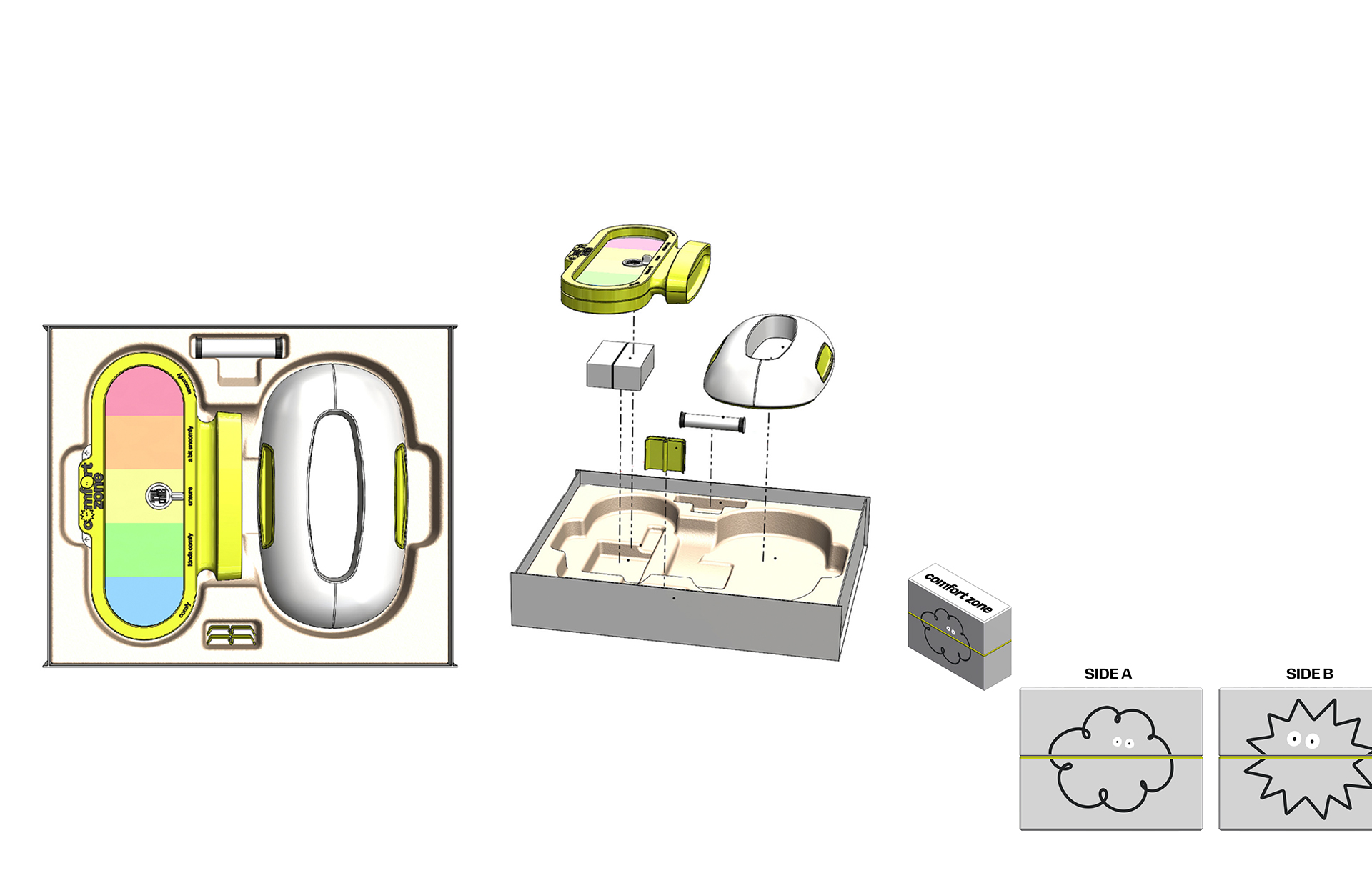
What was the thinking behind the look and feel of the game?
GW: We designed it to be simple, fun and tactile. Taking cues from the party game Wavelength and Cards Against Humanity, the game is built around a playful ‘reveal’ mechanic that adds just the right amount of dramatic surprise and delight that’s needed to spark the discussion.
The sliding scale, punchy cards and layered colours all contribute to a physical experience that feels engaging and emotionally safe. The colour palette is vivid and contemporary, and uses a linear colour spectrum that visually demonstrates how something might feel.
The heart of the branding lies in the characters. Each one is drawn with a single line: a simple visual device that reflects the idea of a comfort zone, and how that ‘line’ can shift, stretch, or spike depending on how respected or violated a boundary feels. Some characters are soft and open. Others are jagged and reactive. Together, they offer an intuitive and inclusive way to explore emotional states without needing heavy language. Young people can literally see what comfort or discomfort looks like.
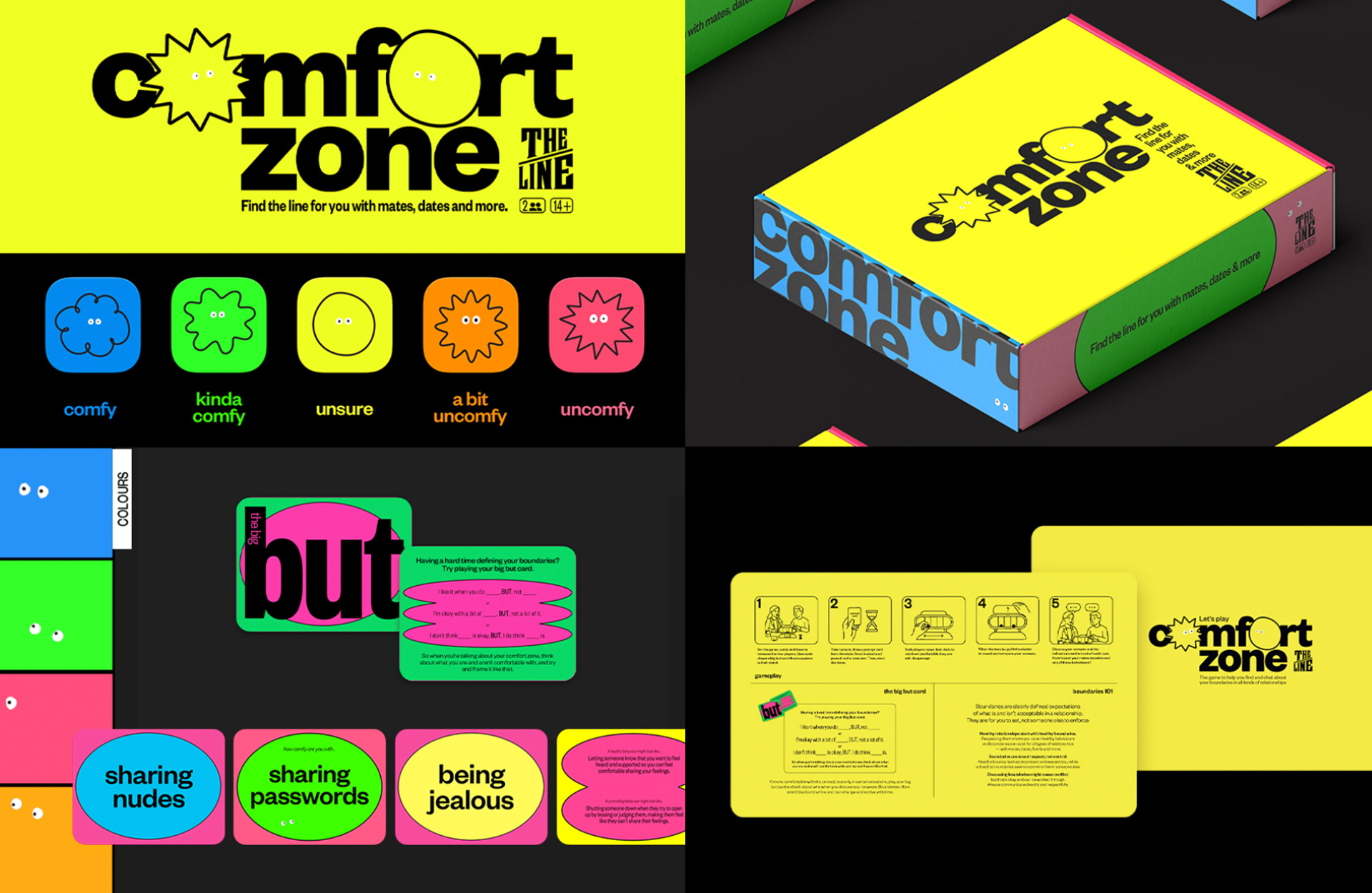
What were some of the biggest challenges you faced during the development of, Comfort Zone?
GW: Walking the line between entertainment and responsibility was the biggest one. We had to make sure every word, every question, struck the right tone. Open, respectful, clear… without triggering distress or oversimplifying complex topics. That meant a long process of co-design, testing, refining, and testing again.
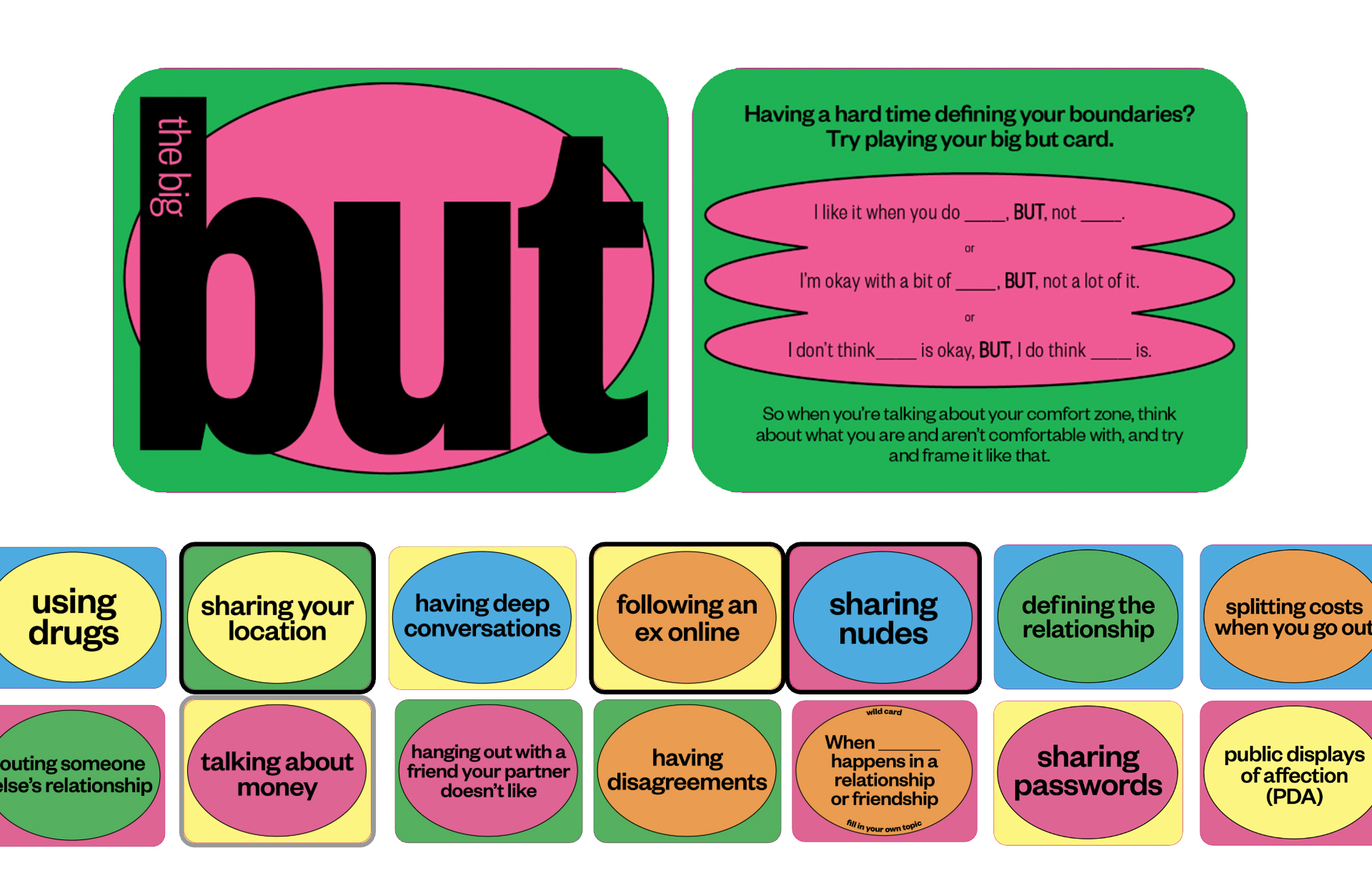
If a young person walks away from playing Comfort Zone with one key takeaway, what would you hope that is?
GW: That setting a boundary doesn’t make you weird, dramatic or awkward. Because the earlier young people learn to recognise and respect boundaries — their own and others’ — the better equipped they are to stop disrespectful behaviour before it escalates. If Comfort Zone helps even one person feel more confident saying “I’m not okay with that,” it’s a step toward preventing the kind of harmful attitudes and actions that can lead to violence later in life.
Client: Our Watch
Creative agency: DDB Group Melbourne
Production: DDB Group, Melbourne’s Maker Studios & Whistle Design Group
Media agency: Atomic
Talent management: Mango Communications
